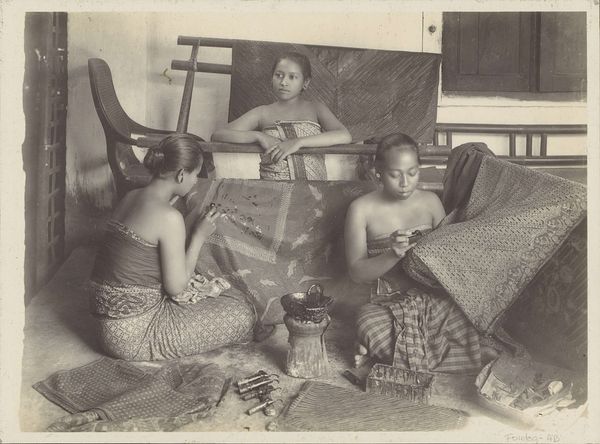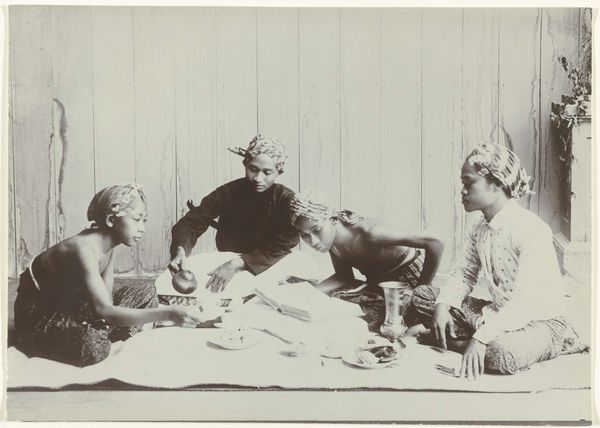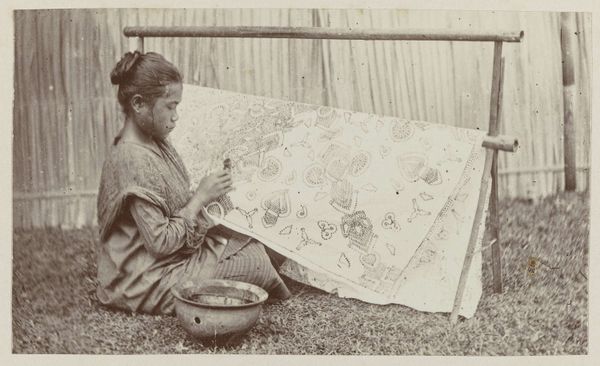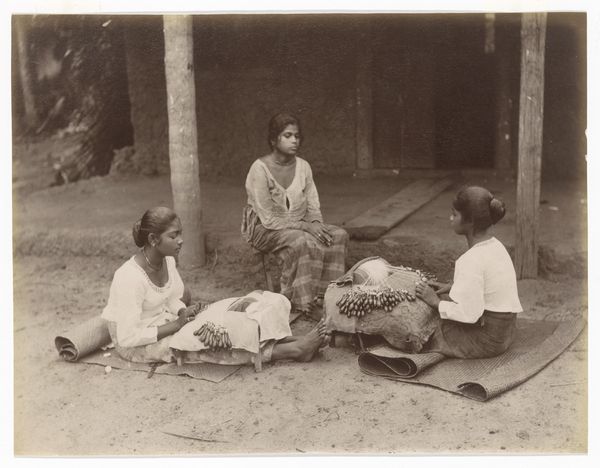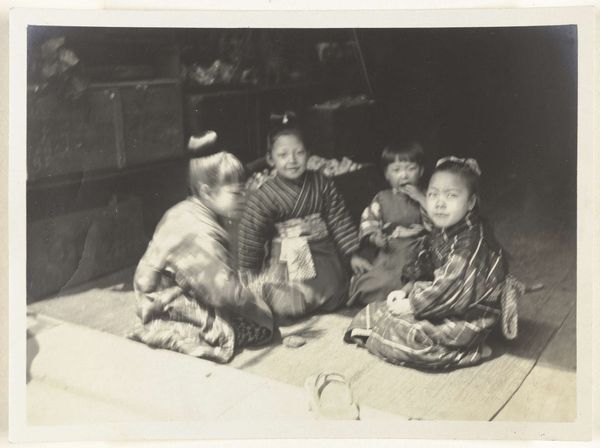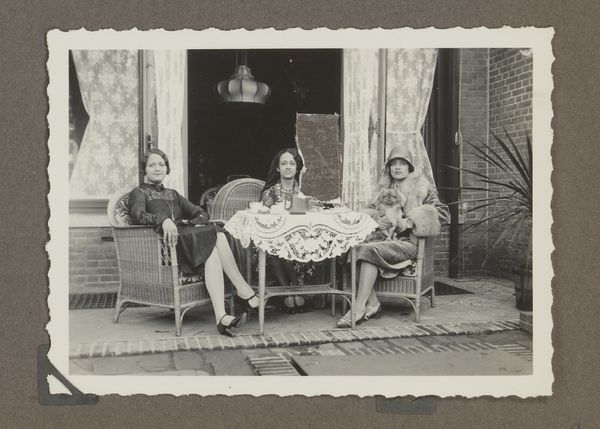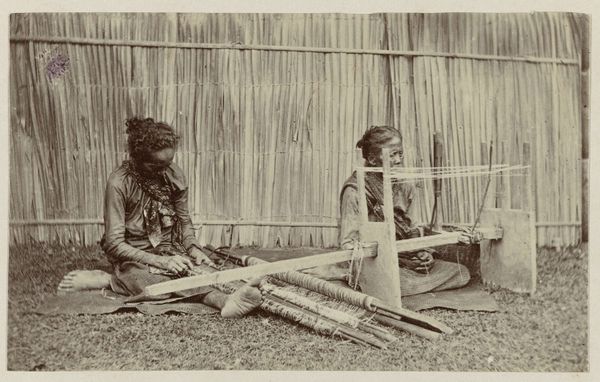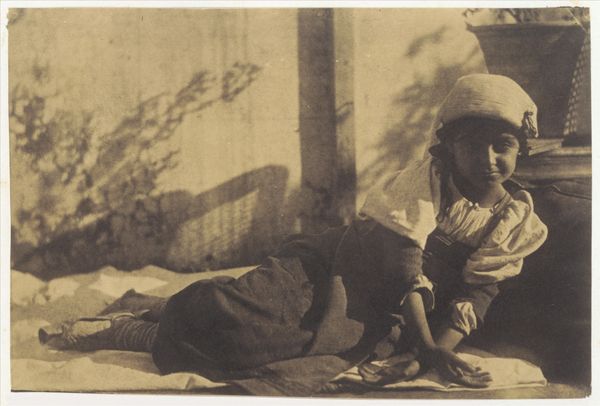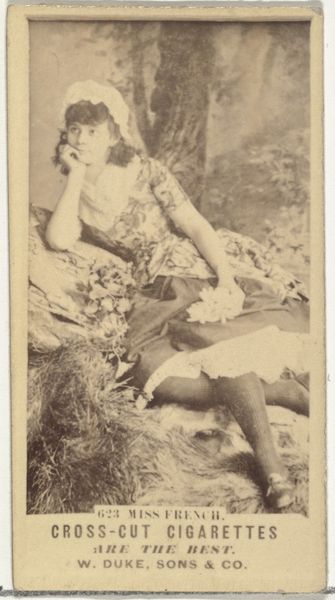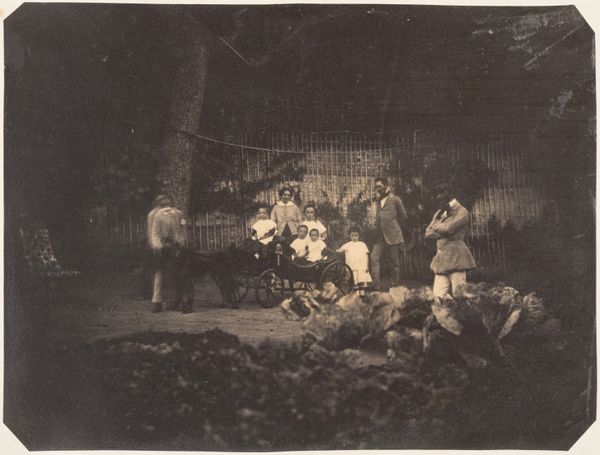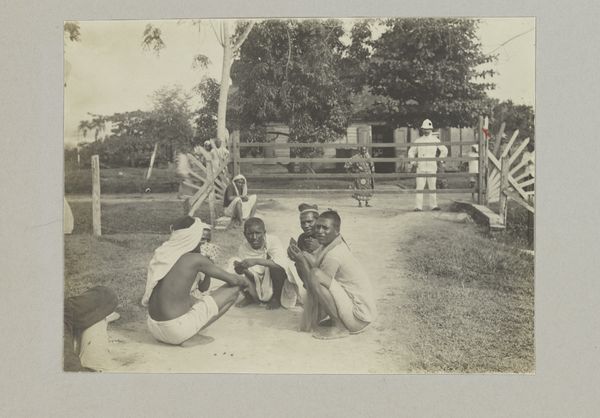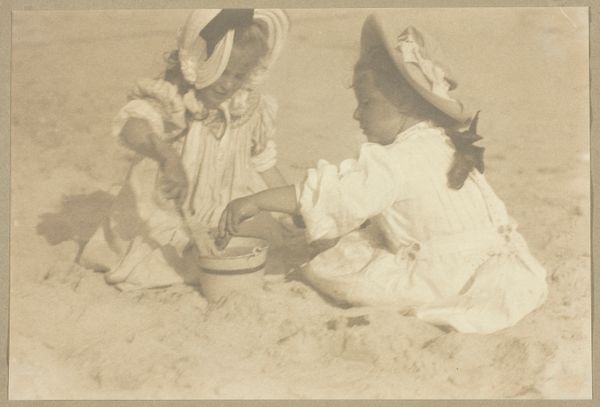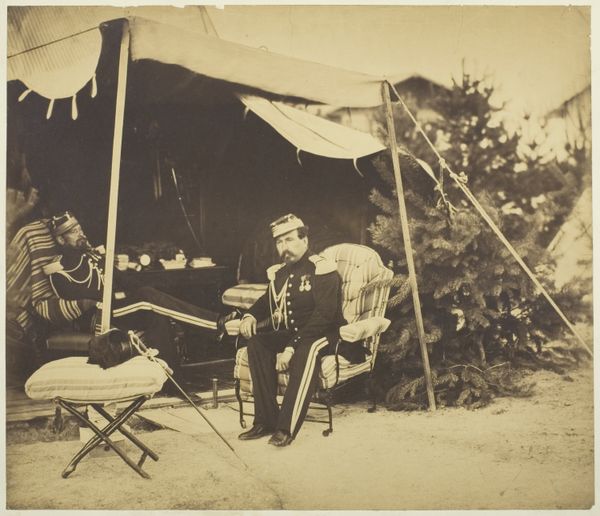
textile, photography
#
asian-art
#
textile
#
photography
Dimensions: height 157 mm, width 218 mm
Copyright: Rijks Museum: Open Domain
Curator: The Rijksmuseum holds a remarkable photographic print titled "Three Javanese Women Drawing Batik Designs on Cloth," likely created between 1867 and 1910 by Kassian Céphas. Editor: It has such a serene quality; the arrangement of the figures is quite elegant. It immediately evokes a feeling of communal focus and the passing of knowledge, perhaps between generations. Curator: Indeed. Céphas's composition is brilliant, emphasizing the lines and textures within the scene. Notice the contrasting geometry of the woven wall against the organic forms within the batik design itself. Editor: I'm struck by the implied stories of labor and creativity that ripple through this photograph. The photo offers us an early, though undoubtedly mediated, view into the lives of women engaged in an important economic and cultural activity. We must remember that it presents a colonial perspective. Curator: And it also presents a compositional study in chiaroscuro; the stark tonal contrasts delineate each object and person. Also the women’s attire adds interest. Observe how their sarongs are meticulously arranged. Editor: Though, let’s not forget what these clothes likely represent—an adaptation of indigenous textiles in a landscape heavily influenced by colonial aesthetics and trade. What do you see as the work’s purpose? Curator: One reading is the artist showing the viewer the aesthetic complexities that are inherent in a photograph featuring Indonesian craftwork and the Javanese subjects. It encapsulates much in terms of artistic innovation of portraiture at that moment. The figures and objects interact harmoniously. Editor: Precisely. To appreciate this work, it must also prompt us to think about access, about who typically gets to see such artistry. How might these images then challenge or perpetuate power dynamics that stretch from then into the present? Curator: Excellent considerations. Through an intersection of art history, sociology, and aesthetic observation, new discussions emerge regarding not only art history itself but issues still faced by populations all across the world. Editor: It makes me think about who creates art history and for whom. Thank you.
Comments
rijksmuseum about 2 years ago
⋮
This photograph has been carefully staged. Three women draw motifs on cotton fabric using molten wax. The wax is heated in a metal pan on a brazier. When the fabric is dyed, the wax motifs remain colour-free. Then the wax is melted away and the pattern emerges.
Join the conversation
Join millions of artists and users on Artera today and experience the ultimate creative platform.
